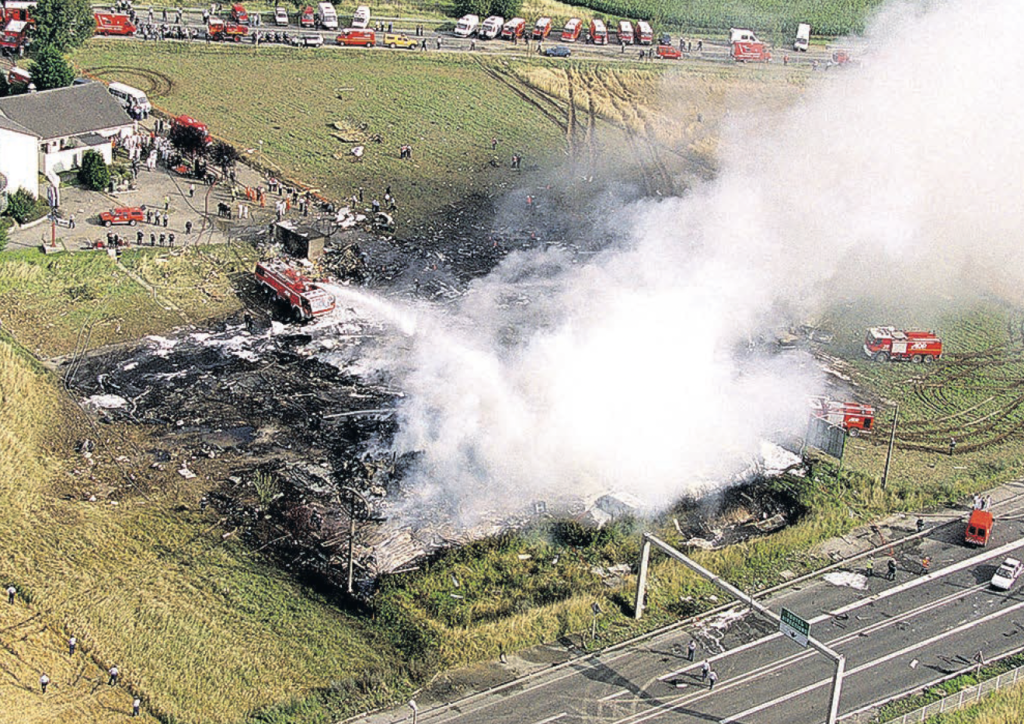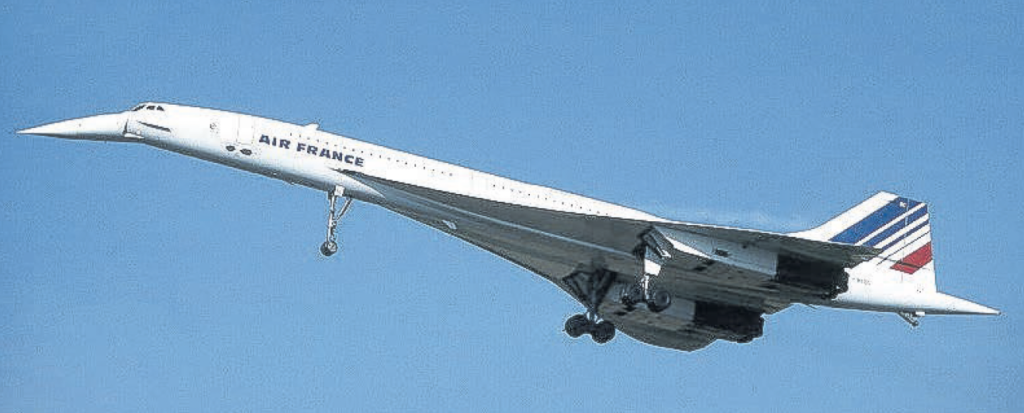Business
Newsday

Photo courtesy AP
On July 25, 2000, an Air France Concorde passenger jet on an international charter flight from Charles de Gaulle Airport, Paris to John F Kennedy Airport, New York, crashed shortly after takeoff into a hotel in nearby Gonesse, in the Val-d’Oise department, in the north-eastern suburbs of Paris.
All nine crew members and 100 passengers on board, as well as four people in the hotel, perished. It was the only fatal Concorde accident in its 27-year operational history.
The flight was chartered by a German company, Peter Deilmann Cruises. Most of the passengers were German tourists heading to New York to board the cruise ship MS Deutschland for a 16-day cruise to Manta, Ecuador.
The Aérospatiale-BAC Concorde aircraft, serial number 203, was 25 years old. The aircraft made its maiden flight on January 31, 1975. It was powered by four Rolls-Royce Olympus 593-610 turbojet engines, each of which was equipped with afterburners.
The aircraft’s last scheduled maintenance check took place on July 21, 2000, four days before the accident. No significant defects were reported. At the time of the crash, the aircraft had flown 11,989 hours and had made 4,873 take-offs and landings.
Five minutes before the Concorde departed, Continental Airlines Flight 55, a McDonnell Douglas DC-10-30, took off from the same runway at Charles de Gaulle Airport for Newark International Airport and lost a titanium alloy wear strip that was part of the engine cowl.
During its take-off run and while the aircraft was doing 185 mph, the Concorde ran over the titanium wear strip, cutting the right front tyre of its left main wheel bogie.
Tire fragments, launched upwards at an estimated speed of 140 metres per second by the rapidly spinning wheel, violently struck the underside of the left wing, damaging parts of the landing gear, preventing its retraction.
High-speed tyre debris did not directly puncture any of the fuel tanks, but it sent out a pressure shockwave that ruptured the number five fuel tank at its weakest point, just ahead of the left landing-gear well.
Large amounts of fuel leaking from the rupture ignited, causing a loss of thrust in the left-hand-side engines one and two.
Leaking fuel gushing out from the bottom of the wing was most likely ignited either by an electric arc in the landing gear bay due to debris cutting the landing gear wire or through contact with hot parts of the engine.
Engines one and two surged and lost all power, likely due to ingestion of hot gases in both engines, and tyre debris in engine one only.
Engine one slowly recovered over the next few seconds. A large plume of flame developed, and the flight engineer shut down engine two in response to a fire warning and the captain’s command.
An air traffic controller at Charles de Gaulle Airport noticed the flames before the Concorde was airborne and informed the flight crew.

However, the aircraft had already attained the V1 decision speed, at which point it is considered unsafe to abort.
The plane did not gain enough airspeed with the three remaining engines, as damage to the landing-gear-bay door prevented the retraction of the undercarriage.
The aircraft was unable to climb or accelerate, and its speed decayed during the course of its brief flight.
The fire damaged the inner elevon of the left wing and it began to disintegrate and melted in the extremely high temperatures.
Engine number one surged again but did not fully recover, and the right wing lifted due to the asymmetrical thrust, banking the aircraft to over 100 degrees.
The crew reduced the power on engines three and four in an attempt to level the aircraft, but lost control owing to deceleration and the aircraft stalled.
Also, fire damage to the flight controls made it impossible to maintain control. The aircraft’s left wing struck the ground after a heading change of nearly 180 degrees, crashing into the Hôtelissimo Les Relais Bleus Hotel in Gonesse.

The official investigation was done by France’s accident investigation bureau, the Bureau of Enquiry and Analysis for Civil Aviation Safety (BEA).
The accident investigation revealed that the aircraft was over the maximum takeoff weight for existing ambient temperature and other conditions and 810 kg over the maximum structural takeoff weight.
Fuel transfer during taxiing left the number five wing tank 94 per cent full. A 12-inch spacer normally keeps the left main landing gear in alignment, but it had not been replaced after recent maintenance. The BEA concluded that this did not contribute to the accident.
Playback of the cockpit voice recorder indicated that the crew tried to divert to nearby Paris-Le Bourget Airport, but accident investigators said a safe landing would have been highly unlikely, given the aircraft’s flight path.
A few days after the crash, all Air France Concordes were grounded, pending an investigation into the cause of the crash.
Commercial service was resumed on November 7, 2001, after the implementation of a safety improvement programme. In May 2003, Air France retired its Concorde fleet.
There were several lawsuits and criminal charges filed as a result of the accident. In 2012, a French appeals court cleared US airline Continental of criminal blame for the July 2000 Concorde jet crash.
However, the court said that Continental might still be liable for damages, as the firm still bore civil responsibility.
A monument in honour of the crash victims was set up at Gonesse. It consists of a piece of transparent glass with a piece of an aircraft wing jutting through.
Another monument, a 6,000-square-metre memorial surrounded by a topiary planted in the shape of a Concorde, was established in 2006 at Mitry-Mory, just south of Charles de Gaulle Airport.
The accident and subsequent investigation were featured in the seventh episode of the Canadian documentary series Mayday, also known as Air Crash Investigation, titled Concorde: Up in Flames, and was first broadcast in January 2015.
In 2020, Montreal synth-pop group Le Couleur released an album, Concorde, inspired by the story of this crash.
